Table of Contents
Can cats drink sparkling water? Is carbon dioxide harmful?
A regular water source is just as important for house cats as it is for us humans. Some cats don’t just limit themselves to tap water, but also like to drink sparkling water – if you let them.
But are cats even allowed to drink sparkling bottled water? Or can the carbon dioxide potentially harm them? You can find the answers to these questions in the following article.
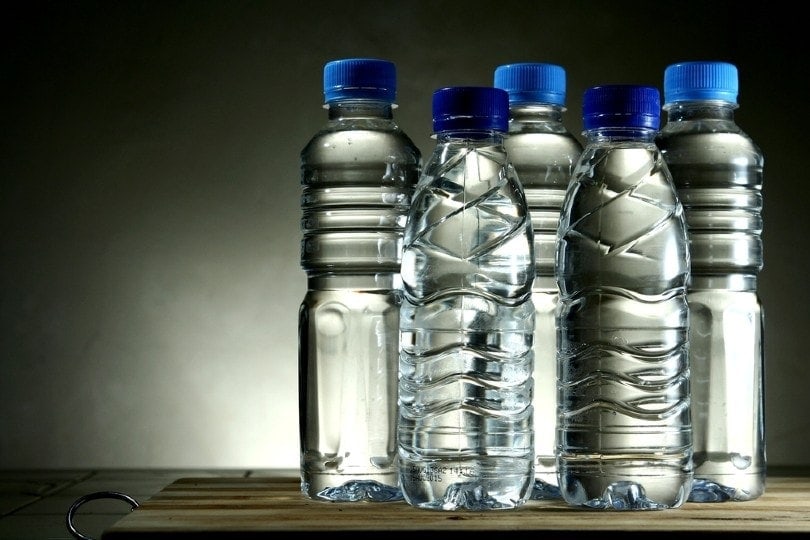
Sparkling bottle water is generally not harmful to cats
First of all, the most important thing for you as a cat fan: sparkling purified water is generally harmless for your cat. If your cat has just secretly drank carbonated water and you immediately reached for your smartphone in a panic, I can reassure you – nothing bad will happen – except perhaps the occasional burp or flatulence.
Like tap water, sparkling water generally has a positive effect on your cat. For example, the water can contribute to the hydration – i.e. fluid supply – of your animal. Enough water in the organism is important to avoid the development of health problems.
For example, drinking enough water per day promotes healthy kidney function. These can better remove waste materials and germs from the body through an adequate supply of water. At the same time, an appropriate amount of fluids can prevent the formation of kidney stones. This applies equally to humans and animals.
Sparkling water not only hydrates, but also contains important minerals
In addition to pure hydration, sparkling water also provides the furry friend with valuable minerals. Of course, the composition of the water plays an important role here. After all, not all sparkling water is the same. It is therefore worth taking a look at the composition of the minerals in the water.
For example, an excess of magnesium in cats can lead to the formation of urinary stones. A severe magnesium deficiency, on the other hand, leads to cramps and muscle weakness.
Here it is like with us humans: Before you add certain substances to your body, you should first research whether there is an excess or a deficiency. If in doubt, it is always worth seeking veterinary advice.
In my opinion, you shouldn’t worry too much about this. After all, it is just drinking water and not medicine. The cat absorbs most of the minerals through food anyway.
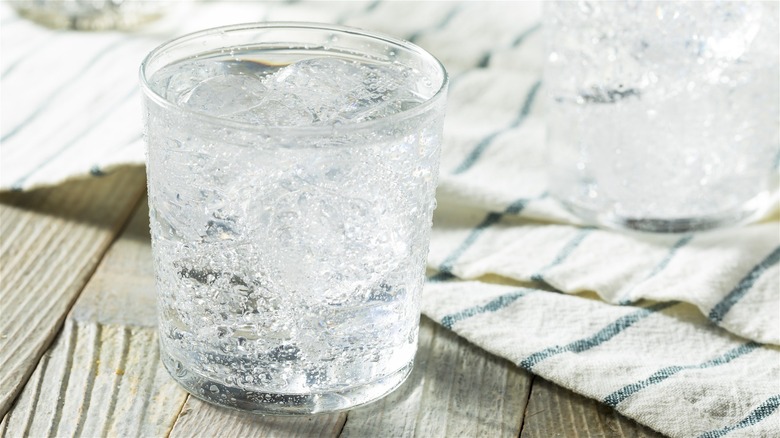
Too much carbon dioxide can cause problems
If domestic cats drink a lot of sparkling water, the proportion of gases in the intestines logically increases. As with humans, this can cause the animal to burp or burp more frequently. At the same time, the carbon dioxide can also cause painful flatulence. In some cases, this can cause your pet to have a stomach ache.
However, a life-threatening situation is not to be expected under normal circumstances to give your cat. This is especially true if the cat has only drunk small amounts of the carbonated water.
Summary of positive and negative effects of cat bottled water
In summary, sparkling water can have the following effects on cats:
- More gas in the stomach
- Possibly flatulence and stomach pain
- Possibly increased burping and belching
- Hydration
- Depending on the type of water: Increased mineral absorption
What type of water is ideal to give your cats?
Now that it is clear that giving cats carbonated water can have both advantages and disadvantages, the question arises as to which type of water is optimal.
The answer is simple: the preferred type should always be still water or tap water. Tap water, which has ideally been stale for a while, is usually ideal for your cat’s needs. The properties of still water correspond most closely to what the cat finds in its original natural environment.
But why do some cat owners still give their animals sparkling water? Sparkling water can generally provide a change for the cat – as long as it tolerates the carbon dioxide well.
If you want to add more variety to your cat’s drinking behavior, you can also use gadgets such as drinking fountains. They act like a natural spring and can stimulate and filter water intake in animals that tend to be lazy to drink.
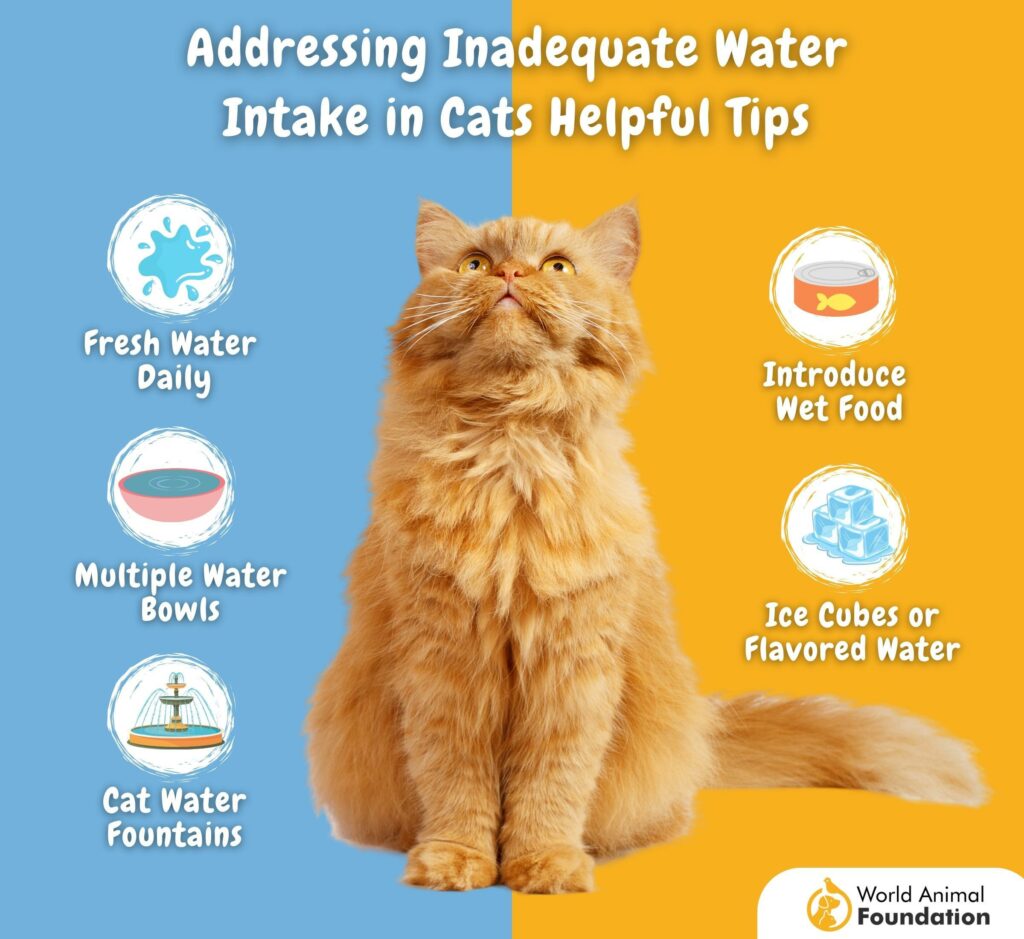
Excursus: Cats are picky and know exactly what is good for them
It is not without reason that cats are considered very demanding animals. The ancient Egyptians worshiped them as deities thousands of years ago. House cats usually instinctively know what is good for them and what could be harmful. By the way, this is not just the case with cats, but with almost all animals.
Some of the cuddly four-legged friends are downright fascinated by the CO2 bubbles. Others, on the other hand, ignore the sparkling water and are not interested in it at all. In some cases, your beloved pet may even be afraid of the carbonated water. These animals shy away from the bubbles and do not drink from them, while other house cats are fearless and eat them out of pure curiosity.
You can easily test how much your cat likes drinking sparkling water . In this case, there is no general answer that applies to all velvet paws. For example, you can give her a plate or bowl with a small amount of sparkling water and see if she generally accepts it willingly.
Stay hydrated – of course this also applies to animals
Drinking enough water is important for everyone, both you and animals. Dogs and cats, for example, need around 60 ml of water per kg of body weight per day. For you, drinking mineral water probably comes naturally. But what about pets like dogs, cats, etc.? Are they allowed to drink something like that too?
Mineral water itself is a natural food. Since animals, just like humans, have a need for different nutrients, there is nothing wrong with this from this point of view. Ideally, find out whether your pet has any special needs with this in mind. A regular check at the vet can’t hurt either. What you should pay attention to in most cases is whether it is carbonated mineral water. Unfortunately, most animals react to this a little more sensitively than we humans.
Can cats drink mineral water?
Just like most other animals, cats generally have no problem with mineral water and are allowed to drink it. However, the carbon dioxide it contains can cause belching and flatulence in furry friends. As a cat owner, you probably know that they can be very picky. If your cat tends to drink less, it may be because he doesn’t like the tap water at home. Still feline bottled water is safe and can be an alternative.
Enough water is important to prevent kidney stones in your cat. The minerals they contain can also have different effects: too much magnesium can promote urinary stones, while too little can promote cramps. However, a bowl of mineral water will not have any drastic effects on your cat’s health. Otherwise, contact your veterinarian if you are unsure about your cat’s nutritional needs. Still mineral water may be a useful addition to your diet.
Tip : If your cat doesn’t drink enough, especially in summer, try ice cubes made from still mineral water. Many of them really enjoy licking things like that. This is a great activity and at the same time ensures that your four-legged friend drinks enough. Alternatively, flowing water is very popular with cats. A cat fountain can work wonders for fluffy people who don’t like drinking.
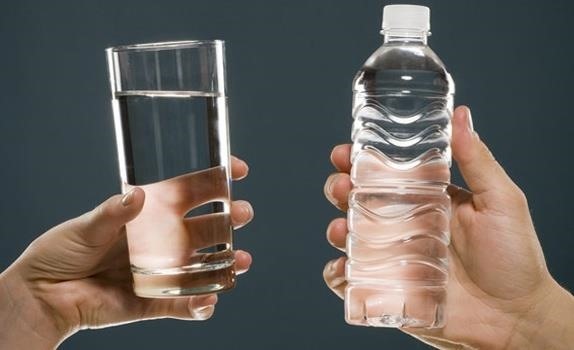
Can cats drink tap water?
Not only us humans, cats too need to drink enough water regularly. However, many pet owners are unsure whether simple tap water is really suitable for their furry friends. Is the cool water from the tap safe? Or should it only go into the drinking bowl when boiled or filtered?
In short: tap water does not harm cats. In US, the water from the tap can usually be used as drinking water for people and animals with a clear conscience. The only thing that needs to be ensured is that the water quality is good in order to save the cats from upset stomachs, diarrhea and vomiting.
Tap water for cats: a question of where you live
In general, the water quality depends on where you live. Mostly harmless in US, the liquid is inedible in other parts of the world. If the tap water in your area is heavily polluted, contains lime or contains many additives such as fluoride, it is worth using products such as mineral water.
If this is not the case, normal tap water is sufficient. The rule of thumb is: If you can tolerate the water from the tap, it is also safe for your cat to drink. If in doubt, you should consult your local waterworks.
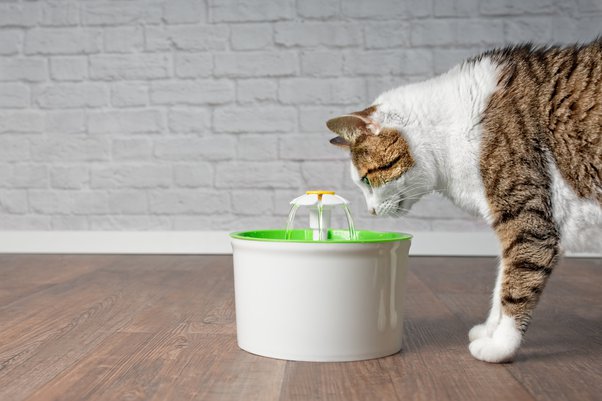
How often should you change the drinking water for your cat?
In order to maintain the high quality over the long term, the drinking water should be replaced with fresh tap water several times a day. In summer, when it is hot, the water spoils more quickly – then it is recommended to replace it about every three hours.
Ideally, you should choose an easy-care vessel made of stainless steel or ceramic as your drinking bowl. Place the bowl a few meters away from the food bowl. Also clean drinking and feeding bowls regularly and thoroughly. Make sure the drinking bowl is always full so that your furry friend always has fresh water at his disposal.
Encourage cats to drink
Cats are often lazier to drink than other pets. Even if cats don’t sweat, they still need water urgently. It helps them control their body temperature. Even a loss of fluids of ten to 15 percent over the course of the day can harm the health of the velvet paws and, in the worst case, even lead to the animal’s death.
Therefore, it is the cat owner’s responsibility to encourage their furry friend to drink. A stable indoor fountain can be useful. A gently babbling water feature magically attracts cats and often entices them to try a sip or two. Ideally, you should also distribute a few water bowls throughout the apartment.
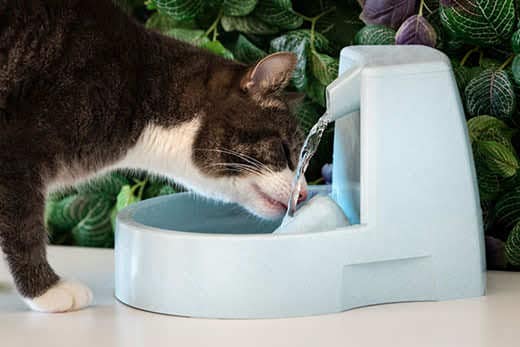
Tips for descaling cat fountains
Nevertheless, the water quality must also be good for the cat fountain. Therefore, as with the bowl, changing the water and cleaning it regularly is a must. Of course, tap water must be used so that the water from the well is compatible with the cats. However, the pipes inside the water feature can become calcified over time if you do not use a descaler from time to time. But be careful: Make sure that it is an organic, non-toxic product and rinse the fountain thoroughly after use.
FAQs:
Q: Can I give my feline bottled water?
A: Yes, you can give your feline bottled water. However, it’s important to ensure that the bottled water is safe and clean for your cat to drink. Look for bottled water that is labeled as safe for drinking and free from any contaminants or chemicals that could be harmful to your cat.
Q: Is purified water better for cats?
A: Purified water can be a good option for cats as it helps remove impurities and provides cleaner water for your pet. However, it’s essential to ensure that the water is filtered using a pet-safe filtration system to avoid any potential health risks.
Q: What is the best water source for cats?
A: The best water source for cats is clean and safe water that is free from any harmful substances. This can include filtered tap water, well water that has been tested for safety, or bottled water that is specifically intended for pet consumption.
Q: How much water should my cat drink?
A: Cats should drink about 60-90 milliliters of water per kilogram of body weight each day. It’s important to ensure that your cat has access to clean and fresh water at all times to encourage proper hydration.
Q: Is well water safe for cats to drink?
A: Well water can be safe for cats to drink if it has been tested and deemed free from contaminants and toxins. It’s important to have your well water tested regularly to ensure its safety for your cat.
Q: Is tap or filtered water better for cats?
A: Both tap and filtered water can be suitable for cats as long as they are free from harmful substances. Filtered water may provide additional benefits by removing impurities, but clean tap water can also be a viable option for your cat.
Q: Why is water essential for cats?
A: Water is essential for cats to support various bodily functions, including hydration, digestion, and temperature regulation. It helps prevent dehydration and promotes overall well-being in cats.
Q: How can I encourage my cat to drink more water?
A: You can encourage your cat to drink more water by offering fresh and clean water in a separate bowl away from their food, considering a cat water fountain, or adding water to their food to increase their overall water intake.
Q: Is bottled water safe for cats to drink regularly?
A: Bottled water can be safe for cats to drink regularly, as long as it meets the necessary safety standards and does not contain any harmful chemicals or contaminants. Always check the label and ensure that the bottled water is intended for pet consumption.
Q: What is the best type of water for cats?
A: The best type of water for cats is clean, fresh, and free from any impurities or harmful substances. Whether it’s filtered tap water, well water, or bottled water, the key is to provide your cat with safe and clean water for drinking to support their health and well-being.